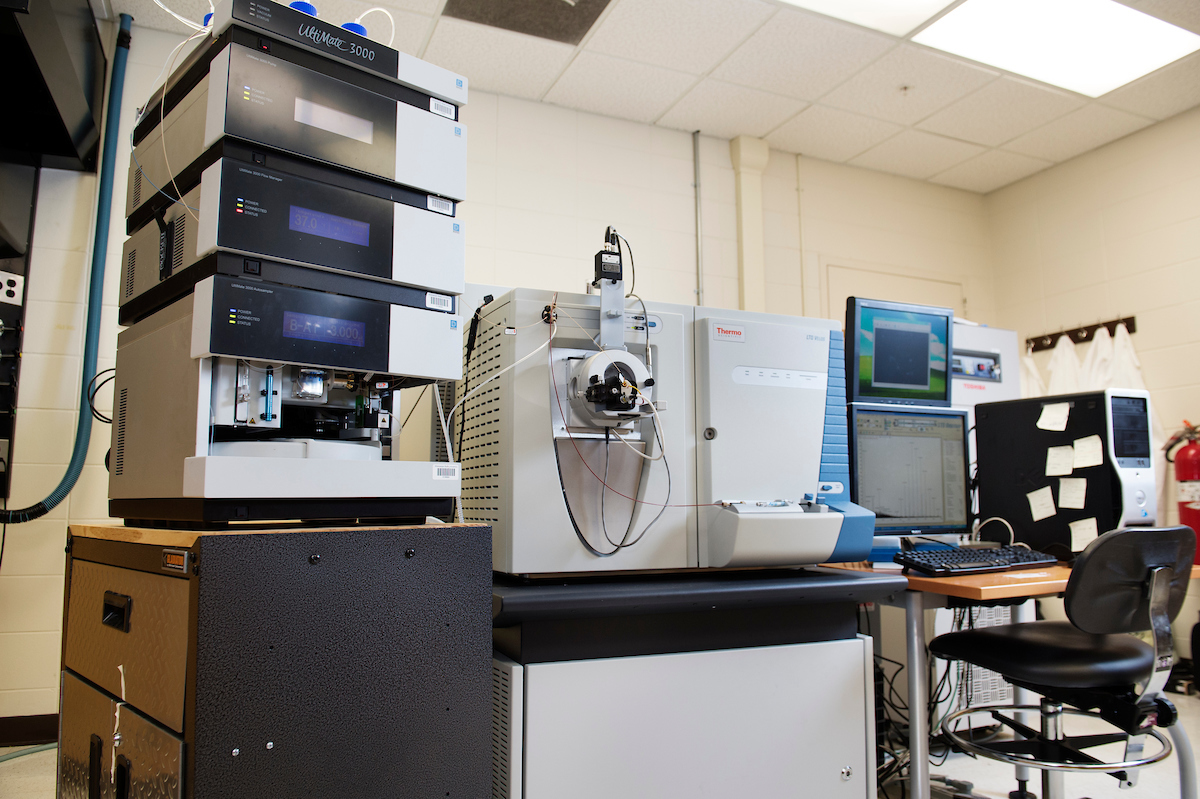Mass Spectrometry Facility

The mass spec facility in the Department of Chemistry specializes in high-resolution mass analysis of chemical compounds. The facility has several instruments capable of performing high-resolution measurements as well as elemental analysis. In addition, graduate students and postdoctoral researchers can receive training on this instrumentation, providing a valuable marketable skill for our future graduates. The current instrumentation is listed below. For more information about the facility, please contact Dr. Ian Webster.
Bruker UPLC Impact II QqToF MS
This ultra high-resolution (>60,000) MS provides accurate mass measurements (capable of <5 ppm error for small molecules) and can be used to perform MS/MS experiments. The instrument includes multiple source options (ESI, HESI-VIP, APPI, and APCI) to analyze a range of analyte types including polar small molecules and larger biomolecules. An integrated UPLC system is also available for mixture analysis.
Bruker UHPLC micrOTOF-Q II High Resolution MS
This high resolution MS is capable of analyzing mixtures through reverse phase UHPLC of dissolved liquids or solids. In addition, the system supports direct injection of pure samples. The micrOTOF-Q II can produce mass accuracies of 1-2 ppm RMS error and resolution greater than 17,500 FWHM, making this instrument an exceptional tool for high quality mass analysis. It is routinely used for analyzing both small molecules and larger biomolecules, with an m/z range of 50-20,000. The instrument is equipped with three possible ionization source attachments: ESI, APPI, and APCI.
Perkin Elmer ELAN DRC II ICP-MS
This instrument is heavily used for elemental analysis in the Department of Chemistry. The ICP-MS is capable of analyzing both aqueous and solid samples, and it has a dynamic reaction cell to increase the coverage of the periodic table, including the analysis of a variety of elements in the presence of ammonia or oxygen. Our ICP-MS is also equipped with a laser ablation accessory for solid sample analysis and can be used analyze a variety of transition metals and f-block elements.
Agilent 1200 Series HPLC-MS
This HPLC instrument is paired with a 6120 series quadrupole ESI MS. The system is equipped with a high-capacity sample changer and a multiple wavelength detector, and several columns are available for use. The MS is suitable for both small molecule analysis as well as protein/DNA spectra and can run in both positive and negative ion mode.
Shimadzu QP-2010S GC-MS
The GC-MS is used to separate mixtures of compounds based on their polarity and then to analyze the components by mass spectrometry. This instrument is equipped with an electron ionization (EI) source and can detect a mass range of 10-900 m/z.